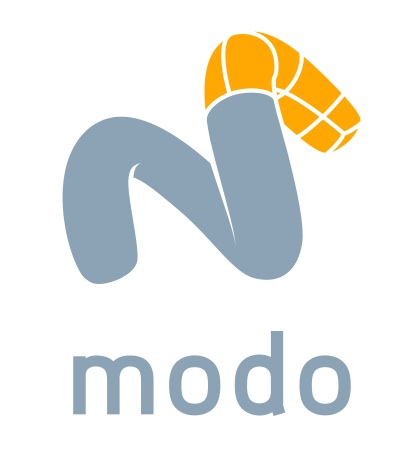 Luxology might be a newcomer to the 3D Modelling scene, but while the company was founded in 2004, most of its executives and a large number of engineers have a long history in the 3D industry, being the team the originally co-founded and wrote NewTek and its product Lightwave 3D. Their first 3D modelling product is modo. I first saw modo when its first version came out, in late 2004; I then downloaded a trial and was very impressed by its intuitive interface and powerful capabilities for such a new program. modo at the time lacked a renderer, and was expensive; I was very busy with work at that time too, so I had limited time to fool around with it before the trial expired.
Luxology might be a newcomer to the 3D Modelling scene, but while the company was founded in 2004, most of its executives and a large number of engineers have a long history in the 3D industry, being the team the originally co-founded and wrote NewTek and its product Lightwave 3D. Their first 3D modelling product is modo. I first saw modo when its first version came out, in late 2004; I then downloaded a trial and was very impressed by its intuitive interface and powerful capabilities for such a new program. modo at the time lacked a renderer, and was expensive; I was very busy with work at that time too, so I had limited time to fool around with it before the trial expired.
While I read the occasional article on modo’s progress and had seen a demo video of its amazing new renderer it was only a few weeks ago after I followed a link to Luxology’s web site that I got around to trying it out again. modo 202, the latest version, includes Luxology’s lightning fast renderer as well as countless enhancements to the 1xx version that I had tried 18 months earlier. I gave the application a spin, being eligible for a trial once again.
modo is a new app, and this is evident from the moment you start it up. There’s virtually no clutter in the interface, as is the case with many large apps that have evolved over the years, such as 3DS Max, one of the most popular 3D Modellers around. It’s also quite simple and intuitive to use. modo is a subdivision surface modeller and supports relatively new concepts such as edge weighting and n-gons. From version 201 onwards, Luxology’s much anticipated 3D painting and rendering engines have been included. The former, similar to the featureset offered by Pixologic’s Z-Brush, allows for direct painting onto the 3D surface, as if it were a real model in space. This makes texture creation much more intuitive, faster (as you can paint in the 3D application, thus minimising the use of bitmap manipulation software such as the Gimp or Photoshop) and — arguably — much more fun. The latter is a very fast photorealistic (auto-switching) renderer/ray-tracer — definitely one the most impressive I’ve seen in years. The application is fully threaded, enabling enhanced performance in multicore/SMP environments. Its preview renderer is also one of the most impressive, effectively allowing real-time, interactive manipulation of materials, geometry and lighting on decent modern hardware, such as dual PowerPC 970s, Athlon X2s, Opterons, Xeons etc.
From the few dozens of hours I’ve spent with the program in the last few days, I’ve noticed a number of deficiencies with the program, including numerous bugs and missing features; luckily for those that have bought it, Luxology is working pretty quickly and I believe that modo will make inroads in the 3D modelling market in a very short amount of time. From the Luxology fora, it seems that the transition from 201 to 202 included a large number of bugfixes, performance improvements and new features.
Earlier this week, modo 202 won an Apple Design Award; If it weren’t so expensive (for an amateur such as myself) I’d probably buy it. Until I can afford $900 3D software, however, the free, ever-improving, and impressively feature-complete Blender will have to suffice for me. Still, if you’re into 3D modelling and are contemplating purchasing a 3D modeller, give modo a try. You’ll probably be impressed.
